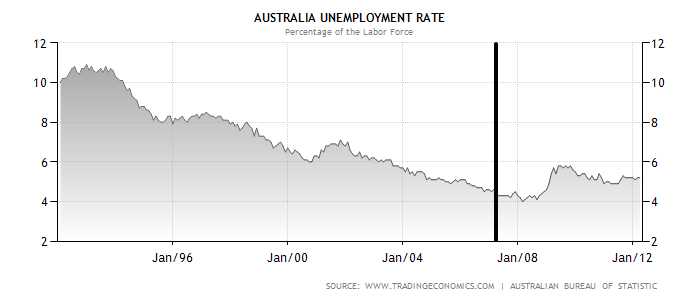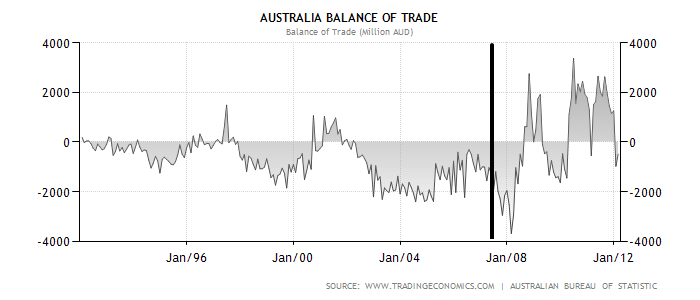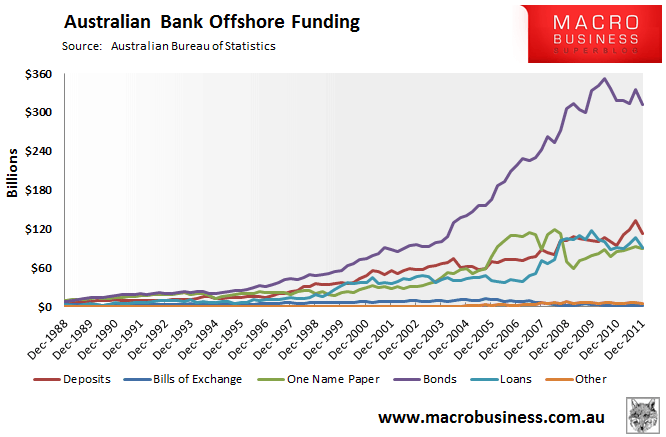Don’t say I didn’t warn you. When I wrote They are coming for the RBA in September last year, the current roar for hand over fist rate cuts was exactly what I had in mind:
To me, it’s as clear as day that Australians hate their new economy. And, at face value, what’s to like? Although the MSM drones on about our good fortune, the fact is, it’s not like the old times. Back then, blind Freddy could get rich, just buy a house, then another! So long as you could service the mortgage, you were a genius. And the rising costs around you didn’t matter.
Well, no longer, and it’s hurting all sorts of people and institutions. Take the above chart, for instance. I’ve no doubt that the current Federal government is largely responsible for its low standing in the polls. Policy backflips, knifing leaders, carbon taxes, failed asylum-seeker policies, piss weak communication and minority government are all playing a role. But I’ve equally no doubt that the interest rate rises that have accompanied the “adjustment” to the mining boom have upset a lot of folk.
Interestingly, to date, the RBA has marched through this conflict unscathed. Recently, union boss Paul Howes had a bit of a dig, but apart from that, the RBA has stood apart, even though it is the one wielding the axe and it is also the one that most often made the case for the “adjustment” to mining-led growth (this is not a judgement, it’s an observation).
However, I suspect the calm at the eye of the battle is about to ruffle.
It is one thing to be raising interest rates, or threatening to, when jobs are raining from the heavens. You’re an economic warrior then, gleaming with righteous sweat as you hike the monetary mountain and slay the inflation dragon.
But what about when jobs start drying up, which is where we are now? A whole series of indicators have shown a turning point in the labour market has already passed and an increasing number of private banks are forecasting unemployment rises to 5.5% and even 6% next year. What happens when the RBA straps on its gauntlets and announces its intention to defend the “adjustment” to mining led growth when the peasants are starving? Then heroism starts to look like tyranny (again, no judgement intended).
Even the hapless leaders on the receiving end of the adjustment can figure this one out. They’ll come for the RBA, stoking their hordes into a wild battle cry for lower interest rates, whether it’s to boost housing or to lower the dollar. Depending on how things go, the entire services economy could turn on the, to date, ignored generals sitting on the hill.
Hysterical demands for 50bps cuts are coming from all directions now, despite a stickily low unemployment rate. Still, what degree of slack there is the in the labour market was very clear in the first quarter NAB survey and showed disinflation surging through the economy.
I could pick any number of emotive beat ups of the RBA to analyse. But Fairfax’s Clancy Yeates penned one of the better articles on the weekend, even if it lined up the usual suspects that last year (with the exception of the Westpac team) wanted the RBA to hike rates into outer space. It began:
The Reserve Bank was the toast of the financial world a decade ago. Australia had notched up its 11th year of economic growth in a row after dodging the 2001 ”tech wreck” recession, and the international plaudits were flowing in.
In September 2002, the governor Ian Macfarlane was crowned central banker of the year by Euromoney magazine. It credited the economy’s performance to his foresight, and luck.
A few years later, Macfarlane was mentioned in media reports as a potential replacement for the US central banker Alan Greenspan.
Fast forward to today and it’s a very different story.The RBA governor, Glenn Stevens, who took over from Macfarlane in 2006, has earned widespread praise from economists for his decisive response to the global financial crisis and the mining boom since then.
But after this week’s shock news that headline inflation was just 0.1 per cent in the March quarter, economists have joined some business leaders in openly criticising the central bank board’s reluctance to cut interest rates.
”I think at the end of the day they’ve got it wrong,” the AMP Capital chief economist, Shane Oliver, says. ”They were right in the way they were saying that the risks of Europe had receded, but they were wrong in missing the weakness in the domestic economy.”
This is an excellent set up for the article. Comparing the Macfarlane RBA with the Stevens RBA has been an intermittent subject of my own and, if handled properly, delivers real insights about the Australian economy. The Yeats piece did not deliver on this score, but I’m grateful that the comparison was made and it is one that we should consider, not because we need to be reassessing the merits of the RBA under Stevens but because the RBA under Ian Macfarlane enjoys a glowing reputation that needs reappraisal to make sense of our current struggles.
The big problem facing anyone aiming to do this is simple. On the surface, in the measures of prosperity that populists typically like to champion – growth, confidence, employment and controlled inflation, the performance of the economy under Macfarlane was much better than it has been under Stevens (I’ve marked the transition point):
First, GDP:

And unemployment:

Confidence and retail sales:


And inflation:

On every measure you can see declining performance and/or increasing volatility since Macfarlane departed.
The truth is, however, that this is an incomplete picture at best and, in my view, closer to a complete illusion. Macfarlane era economic performance was based upon an unsustainable economic model that built up imbalances that are now facing a long and nasty reckoning.
Making the challenge of reassessing the Macfarlane era more difficult still, the measures that show its dark underbelly are the taboo subject in Australian media discussions of the economy: current account deficits, offshore and household debt.
The biggest of Macfarlane’s great imbalances was the current account deficit (CAD), which the Stevens’ era has very significantly improved:

The trade deficit has also radically improved under Stevens:

Not too mention that the Stevens’ RBA has engineered a clear peak in the offshore funding that comes with the CAD:

On these major measures of national interest economics, which are about sustainable growth and standards of living, the Stevens RBA makes the Macfarlane RBA look like a babe in the woods. To my mind, it is certainly right to compare Ian Macfarlane with Alan Greenspan, but not necessarily in a good way.
Moreover, the Stevens RBA has had to manage this transition almost on its own, with Australia’s Government and Opposition, not mention media, trapped on their knees before the alter of an illusionary past and often continuing policies that are aimed squarely at keeping the old game of debt-funded growth going.
Having said that, the Clancy Yeats piece concluded with another quote about the current RBA from Shane Oliver with which I do agree:
”They’ve only been wrong for the past three months”
Exactly. Even Stephen Koukoulas, who’s been perhaps the loudest voice calling for 50bps tomorrow, admitted as much on the weekend. And if so, what’s the bloody hurry for emergency cuts, which is what 50bps represent?
No, the right course is 25bps tomorrow. Another 25 in June then wait and see if the interests that drive our political economy can revive yesterday’s model.
P.S. I realise that this is a pretty limited frame of reference through which to view monetary policy but hopefully you get the point.

